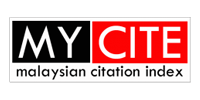Crystal properties analysis using the Cramer-Cohen method and the MAUD software in SrTiO3 ceramic doped with ruthenium oxide (RuO2)
DOI:
https://doi.org/10.58915/ijneam.v18i4.2665Keywords:
Crystal properties analysis, Cramer-Cohen method, MAUD software, SrTiO3, CeramicAbstract
The analysis of Strontium Titanate (SrTiO3) ceramics doped with Ruthenium (Ru) with variations of dopant concentration at 0%, 0.5%, and 1% using the Solid-State Reaction method was successfully executed. The annealing process started at room temperature and was raised to an annealing temperature of 850°C at a heating rate of 1.67°C/minute, held constant for 8 hours, and then cooled down to room temperature for approximately 13 hours. XRD data analysis using the Cramer-Cohen method showed lattice parameters of
a = b = c = 3.905 Å for undoped SrTiO3, a = b = c = 3.903 Å for SrTiO3 doped with 0.5% Ruthenium, and a = b = c = 3.901 Å for SrTiO3 doped with 1% Ruthenium, with a cubic crystal structure. XRD data analysis using the MAUD software employing the Rietveld method with 21 iterations resulted in the diffraction pattern of SrTiO3 ceramics, yielding lattice parameters of a = b = c = 3.907 Å for undoped SrTiO3, a = b = c = 3.906 Å for SrTiO3 doped with 0.5% Ruthenium, and a = b = c = 3.905 Å for SrTiO3 doped with 1% Ruthenium, with a cubic crystal too. The XRD data analysis using both the Cramer-Cohen method and the MAUD software employing the Rietveld method showed relatively close lattice parameters, indicating that the experimental XRD spectra closely align with the theoretical analysis performed by the MAUD software.
Downloads
Published
How to Cite
Issue
Section
License
Copyright (c) 2025 International Journal of Nanoelectronics and Materials (IJNeaM)

This work is licensed under a Creative Commons Attribution-NonCommercial-ShareAlike 4.0 International License.

















